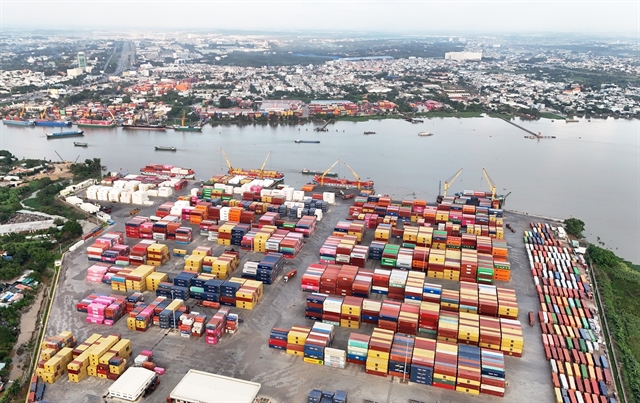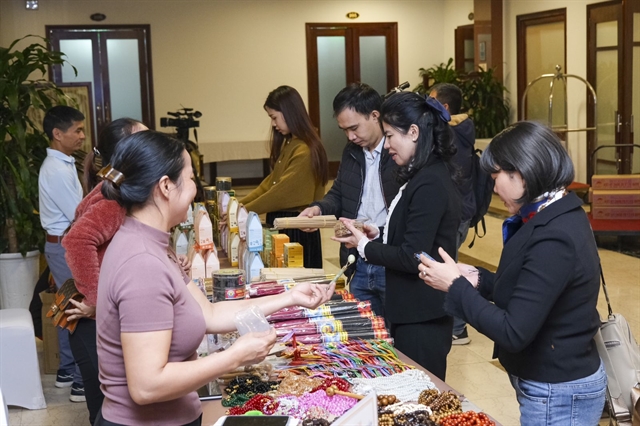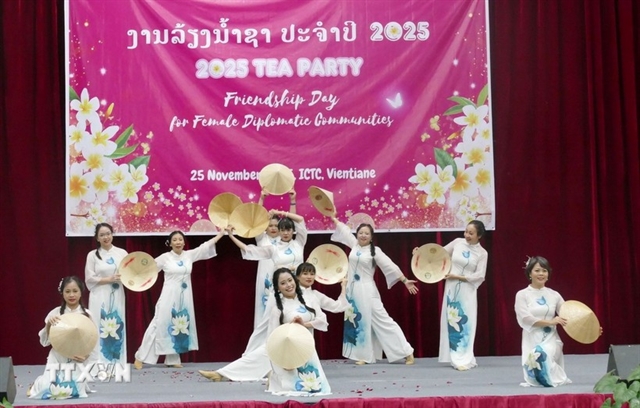 Economy
Economy

 |
| OCOP products are shown at a conference on connecting consumption of OCOP products held in Hà Nội on Tuesday. Photo moit.gov.vn |
HÀ NỘI — The Ministry of Industry and Trade (MoIT) held a conference in Hà Nội on Tuesday connecting OCOP products to strengthen trade promotion and consumption.
The conference attracted the presence of leaders of agencies under the MoIT, ministries, central branches, Hà Nội, and several localities, industry associations and business communities.
Many agreements on promoting the consumption of One Commune One Product items were signed at the event.
Bùi Nguyễn Anh Tuấn, deputy director of MoIT's Domestic Market Department, said that the ministry has implemented many activities according to the Government's approved development programmes of One Product One Commune (OCOP) for the period 2018-2020 and the period 2021-2025.
The ministry has built a database on OCOP products and a system of points introducing and selling products nationwide on the website http://sanphamvungmien.vn.
The ministry has promoted communication, propaganda and promotion activities and built images and brands for OCOP products and sales points of those products.
Along with that, the ministry has developed criteria for introducing and selling OCOP products as a basis for localities to build introduction and selling points.
It has also provided funding and support for 25 localities from 2019 until 2023 to introduce and sell OCOP products in those localities.
Some localities have created their own introduction points according to the criteria of the MoIT, such as Hà Nội (with more than 85 product introduction and sales points), Quảng Ninh (30), Bắc Kạn (10), Bến Tre (12), and Thanh Hóa (five).
At the same time, the ministry has also organised a series of market connection activities, and conferences on supply and demand to promote consumption of OCOP products, agricultural products, key products of localities and regional specialties.
With those solutions, the "One Commune One Product" programme has created a strong start-up movement, contributing to transforming production towards expanding the scale of commodity production associated with chain development among the localities.
The number of OCOP products is increasing with good quality and clear origins. The products have nice designs and applications of science and technology. They are gradually affirming their value and reputation in the market, so their revenue and selling price are increasing.
The OCOP programme was approved in 2018 with three goals that are to develop forms of organising production and business, change the economic structure to improve people's income and living standards; and carry out industrialisation and modernisation of the agriculture and rural areas.
After more than five years of implementation, Việt Nam now has 10,322 OCOP products in all 63 provinces and cities, including 67.3 per cent being three-star products and 31.2 per cent being four-star products.
In addition, 5,361 businesses are joining OCOP programme, of which 38.1 per cent are cooperatives, 24.2 per cent are enterprises, and 34.9 per cent being production/business households.
According to experts and businesses, with the connection of the MoIT, rural and industrial products, specialties, and potential products in the localities have been connected to the system of OCOP product introduction and sales points nationwide. The products have also entered all major distribution systems, such as Go!, MM Mega Market, Saigon Co. op, Winmart and Winmart+.
Many large distributors such as Central Retail, AEON and Saigon Co.op have coordinated with the MoIT and localities to organise events to connect and promote the consumption of OCOP products at supermarket systems, such as OCOP Week at Big C, OCOP product connection fair at AEON supermarkets, and OCOP agricultural product promotion week at Saigon Co system.
Meanwhile, many localities have been promoting the consumption of OCOP products during cultural and tourism activities, including Hà Nội, Quảng Ninh, Lạng Sơn, Thanh Hóa, Nghệ An, Quảng Bình, Ninh Thuận, Bình Thuận, Kiên Giang, Lâm Đồng, Đồng Tháp and Cà Mau. — VNS




